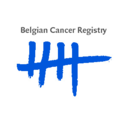In short
The Nucabel study was performed on demand of the Belgian Minister of Social Affairs and Public Health. The study investigated the possible health risks and particularly cancer risks of living in the vicinity of Belgian nuclear sites by means of an epidemiological study at national level.
Project description
The possible health risks associated with living in the vicinity of nuclear installations, a public concern for several decades, was boosted worldwide by the publication of a German study, which found more childhood leukemia cases than expected for those living at close proximity of German power plants . The radiological incident that happened at the Belgian Institute for Radio-elements in Fleurus in 2008 raised public concern even more. Hence, the Minister for Social Affairs and Public Health ordered a nation-wide epidemiological study to take a first look at the possible health risks associated with living in the vicinity of nuclear sites.
More specifically, the objective was to investigate whether there is an excess of cancer incidence (number of new cancer cases per year per 100,000 persons) in the population living around the nuclear sites in Belgium as compared to the Belgian reference population. The objective was also to investigate the association between cancer occurrence and different surrogate exposures from the nuclear sites, i.e.:
- distance
- wind direction and frequency
- hypothetical estimated releases from the nuclear sites.
The Nucabel 1 study was performed at the level of the municipality. No increased incidences of childhood leukemia were observed for the population living in the vicinity of the nuclear power plants of Doel and Tihange, or the nuclear site of Fleurus. Close to the site of Mol-Dessel, the incidence of acute childhood leukemia was higher than expected but this observation was based on a very low number of cases.
The Nucabel 2 study was requested by the Belgian Federal Parliament as a follow-up study of the previous study. The study was carried out with cancer data on a smaller geographical level, i.e. the statistical sectors which are subdivisions of the municipalities. Working at the statistical sector level allows more precise analyses.
Added value for public health
Assessment of the possible health risks and particularly cancer risks of populations living in proximity of Belgian nuclear sites.
Added value at scientific level
Acquisition of scientific knowledge, providing information to the authorities and the public in the areas of cancer risks and radiation exposure.
Results
Results
The results of Nucabel 2 confirm that the incidence of childhood leukemia around the Doel and Tihange nuclear power plants and the Fleurus nuclear site is not higher than elsewhere in Belgium. If we zoom in on the area within a radius of 20 km around the three sites, we do not see an increase in the number of cases of childhood leukemia with increasing exposure.
In the vicinity (< 5 km) of the Mol-Dessel nuclear site, we find an incidence that is 3 times higher than the rest of Belgium and the results are statistically significant. Nevertheless, the number of observed cases remains low. If we zoom in on the area within a radius of 20 km around the site, increasing exposure also suggests an increase in the number of cases of childhood leukemia.
! It should be remembered that the results of this study do not establish a causal link between the occurrence of cancer cases and the proximity of the Mol-Dessel site. Other environmental factors and other forms of environmental pollution may also be responsible for this. Moreover, as the study was carried out at the level of population groups, it does not take into account individual characteristics, other harmful exposures from the environment, individual genetic predisposition or any exposure to radiation for medical reasons.
Even though we find more cases of childhood leukemia near Mol-Dessel, their number remains small. Child leukemia is a rare disease and a child runs only a small risk of developing this form of cancer. It is known about this disease that it may be the result of high doses of radiation. There are probably other causes as well, one should know that a large number of cases of childhood leukemia cannot be explained. Finally, attention is drawn to the generally good cure rate of this disease and to the fact that Belgium has the best available treatments.
Recommendations
In order to improve the follow-up of this disease, the following recommendations were formulated:
- continue efforts to register the incidence of childhood leukaemia and to include possible risk factors in the registration
- better linking of health and environmental exposure databases.
In order to prevent childhood leukemia, the High Health Council (HGR) generally recommends avoiding excessive exposure to ionising radiation for medical reasons and to pesticides. This applies to children as well as pregnant and breastfeeding women and their partners if they still have a desire to have children. Smoking and drinking alcohol are strongly discouraged, especially during pregnancy or if one wishes to have children. The Supreme Health Council also recommends strengthening the immune system of children by breastfeeding and allowing children to attend a nursery from an early age.
More information about this study can be found in the NUCABEL 2B report below.
Sciensano's project investigator(s):
Service(s) working on this project
Partners





